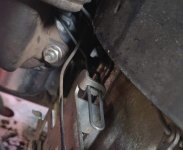micahmesser
Member
- Joined
- Sep 21, 2021
- Threads
- 1
- Messages
- 12
It is $140 for the OEM carb. The Chinese ones I have tried before fail within a month or two, those are the cheap ones. The one that is on the mower now is an OEM one I bought a year ago. Worked great until last week when I went to mow.Replace the carb. They are not that much money and all indications are for whatever reason, their is something defective internally with your current carb.

